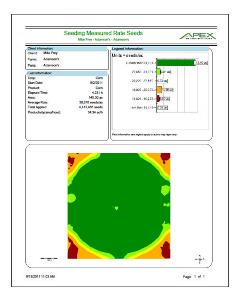Mega Menu
Mega menu is possible in BS5 but we will need to create a custom template layout for the navigation widget. The following is a hard-coded example.

Font Awesome 6
FA6+ icons will work on all widgets.
The FMH Icon box will need a new version created because the styling is broken in Bootstrap 5 templates (this has nothing to do with FA).
FMH Icon Widget
Icons can now be used in Content blocks by pasting the HTML tags from www.fontawesome.com into the HTML editor.
Here are some new icons from Font Awesome 6
face-awesome
envelopes
wheat-awn
Bootstrap Components
Code snippits from http://getbootstrap.com pasted into Content Blocks.
h1. Bootstrap heading
h2. Bootstrap heading
h3. Bootstrap heading
h4. Bootstrap heading
h5. Bootstrap heading
h6. Bootstrap heading
Nav Tabs
Nav Pills
Accordion
.accordion-body, though the transition does limit overflow.
.accordion-body, though the transition does limit overflow.
.accordion-body, though the transition does limit overflow.
Tables
| # | First | Last | Handle |
|---|---|---|---|
| 1 | Mark | Otto | @mdo |
| 2 | Jacob | Thornton | @fat |
| 3 | Larry the Bird | ||
Alerts
Image Carousel
Modals
Sitefinity Widgets
Default, out of the box, Bootstrap 5 templates available for widgets.
The navigation template used above is called Horizontal.
Navigation Widget - Tabs Template
Navigation Widget - Pills Template
Breadcrumb


List Widget - Expandable List Template
Precision Claims FAQs
List Widget - Simple List Template
Crop Claims Reminders
-
How To Report MPCI Claims
-
MPCI Claim Reporting Deadlines
-
Appraisals
-
Production Records by Unit
-
Production Delivered to a Commercial Elevator
-
Production From Precision Farming Technology Systems
-
Production Weighed and Farm Stored
-
Authorization for Load Records, Storage Structure Marking, or Combine Monitor Records
-
Fed Production
-
Quality Adjustment
-
What is a Simplified Claim?
-
What can insureds do to expedite the claim process?
List Widget - Anchor List Template
Quality Control Review FAQ
- What can an Insured do to prepare for a review?
- What can Agents do to prepare for a review?
- How does the review process begin?
Quality Control Review FAQ
What can an Insured do to prepare for a review?
Third party documentation (i.e. summary/settlement sheets from the elevator) is required when applicable and available. Insureds are expected to have available hard copy records that will 1) support the total production raised for the crop/county/year being reviewed and 2) that can demonstrate how production was kept separate between various units, practices and types (if applicable).
Insureds will also want make themselves available to meet with the quality control reviewer as the reviews will need to be completed before the claims can be processed.
What can Agents do to prepare for a review?
How does the review process begin?
Documents List - Documents List Template
Documents List - Documents List Template
| Title | Type | Size | |
| 1053 KB | DownloadECOplus_Brochure_2026_TRIFOLD | ||
| 1107 KB | DownloadSCOplus_Brochure_2026_TRIFOLD | ||
| 491 KB | DownloadFMH MHC Letter Combined | ||
| 0 KB | DownloadGroup 2 Wire - FINAL PDF | ||
| 0 KB | DownloadGroup-Wire-FINAL-PDF-compressed |
News Widget - News List Template
News list template is the only template available by default.
-
Three Tips for Better 2025 Crop Insurance Claims
Nov 4, 2025, 11:36 by User Not FoundCrop insurance claims can be complex. For a smoother and faster claims experience, be sure to report promptly and prepare the right records with our helpful tips.Full story -
Precision Solutions Cuts Claim Time in Half for Farm Family
Nov 1, 2025, 11:02 by User Not FoundUsing precision data to adjust a crop insurance claim can cut the time it takes to complete the appointment and paperwork in half.Full story -
FMH Statement on Oct. 1, 2025, Government Shutdown
Oct 1, 2025, 11:18 by User Not FoundThe following statement has been sent to FMH agency partners. For policyholders with questions about MPCI crop insurance impacts due to the shutdown, please contact your FMH agent.Full story -
NEW FMH STUDY PROVES PRECISION CLAIM EFFICIENCY, STEWARDSHIP
Sep 18, 2025, 10:36 by Elise HepkerDid you know precision claims can cut more than half the time off a traditional claim to complete? Not only does this save time for your customers, but they can also receive claim payments even faster.Full story -
FMH Registers Record Number of Precision Acres Reported
Sep 4, 2025, 13:39 by User Not FoundFMH was among the first in the industry to create crop insurance solutions based on precision ag data.Full story
Blog Posts Widget - Blog Posts Lists Template
How FMH is Different From Other AIPs
How is FMH Different From Other AIPs Utilizing Precision Data?
![]()
Industry Expertise
Because we were one of the first to utilize precision data in the industry, FMH has expertise that other Approved Insurance Providers (AIPs) don't have.
![]()
Specialized Training
We have a dedicated precision team to support agents and policyholders in the field and office. Our precision crop insurance-certified sales and claims staff are trained on how precision agriculture records are used for standard processes.
![]()
Direct Connections
Our systems connect with popular farm management software platforms like FieldView™ and MyJohnDeere so data can flow directly from the producer’s FMS into their FMH policy. By not clipping boundaries, we use the most accurate data possible.
![]()
Precision Focus
While other AIPs focus mainly on acreage reporting, FMH offers ways to use Precision Solutions throughout the growing season for acreage and production reporting and claims.




Leave a commentOrder by
Newest on top Oldest on top